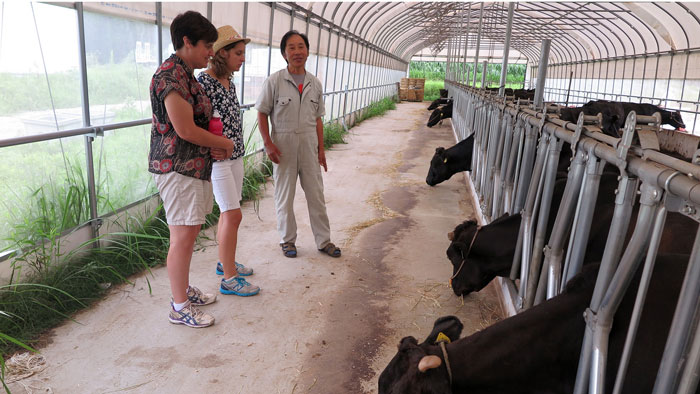Meat and Livestock Australia and the Australian Embassy in Japan recently arranged for New Colombo Plan Scholar Megan Lock and her parents, visiting cattle farmers from Kalangadoo in South Australia, to visit a beef stud in Chiba, Japan.
Megan writes of meeting the inspirational Mr Kobayashi and similarities and differences between cattle production in Australia and Japan.
While studying as a New Colombo Plan Scholar in Japan, I was very lucky to visit the beef property of Mr Kobayashi in Sanmu City, Chiba Prefecture.
My parents, who were traveling in Japan at the time and run a small beef property near Kalangadoo in the South East of South Australia, joined me for this experience.
As Japan is Australia's second-largest beef export market, we were very interested to see how Japan's domestic beef farmers produce and market their product.
Mr Kobayashi's story is an extraordinary tale of resilience and love for all things beef.
After being forced to evacuate from his home in Iiate Village, Fukushima Prefecture, following the March 11 nuclear disaster in 2011, he re-established his stud in Chiba prefecture, East of Tokyo.
Incredibly, he transported his cows 300 kilometres to the new farm and continued with the original bloodline.
Also, joining us on the tour was Mr Sato, a current Master's student in Agriculture at the University of Tokyo, and also from Iiate Village. Through his research and other initiatives he is trying to assist Mr Kobayashi and others from Iiate Village who have continued to farm after the disaster.
Both Mr Kobayashi and Mr Sato were very generous hosts. Mr Kobayashi cited the support he had received from Australian farmers during his move and shared many of his farming techniques and knowledge with us. However, he would not disclose his secret recipe for finishing cattle! We were able to discuss the similarities and differences in agriculture in the two nations, in particular, with regards to the relative size of properties, climate, feeding and housing of animals.
Mr Kobayashi runs an interesting business model breeding and finishing all animals on his property. This provided as a unique opportunity to taste his product in a local restaurant before walking among the extremely quiet and stress-free cattle in the afternoon, including a 10-day old calf.
We also discussed the difficulties in encouraging younger generations to enter the agricultural industry and build sustainable rural communities. This is a challenge faced by many communities in both Australia and Japan.
The farm visit was an example of the opportunities that the New Colombo Plan Scholars are afforded by living and studying in Asia. I wish to thank our wonderful hosts for their generosity, Meat and Livestock Australia for organising this visit and the Australian Embassy in Japan for their assistance.
Megan Lock
2016 New Colombo Plan Scholar
The University of Adelaide/Osaka University



